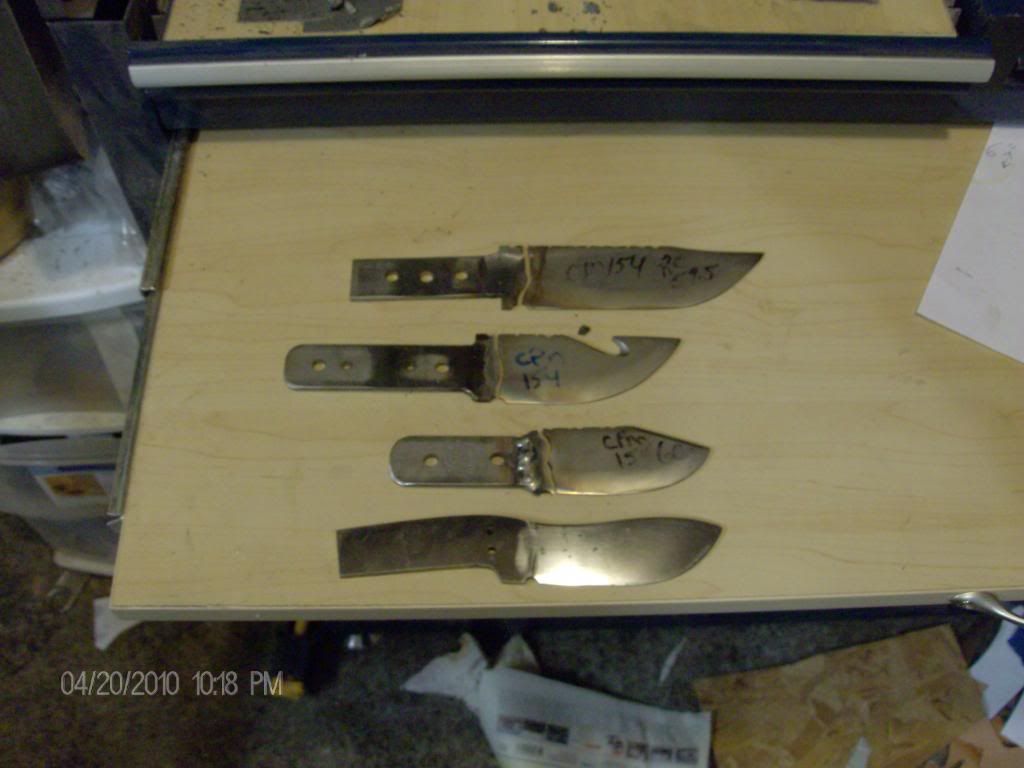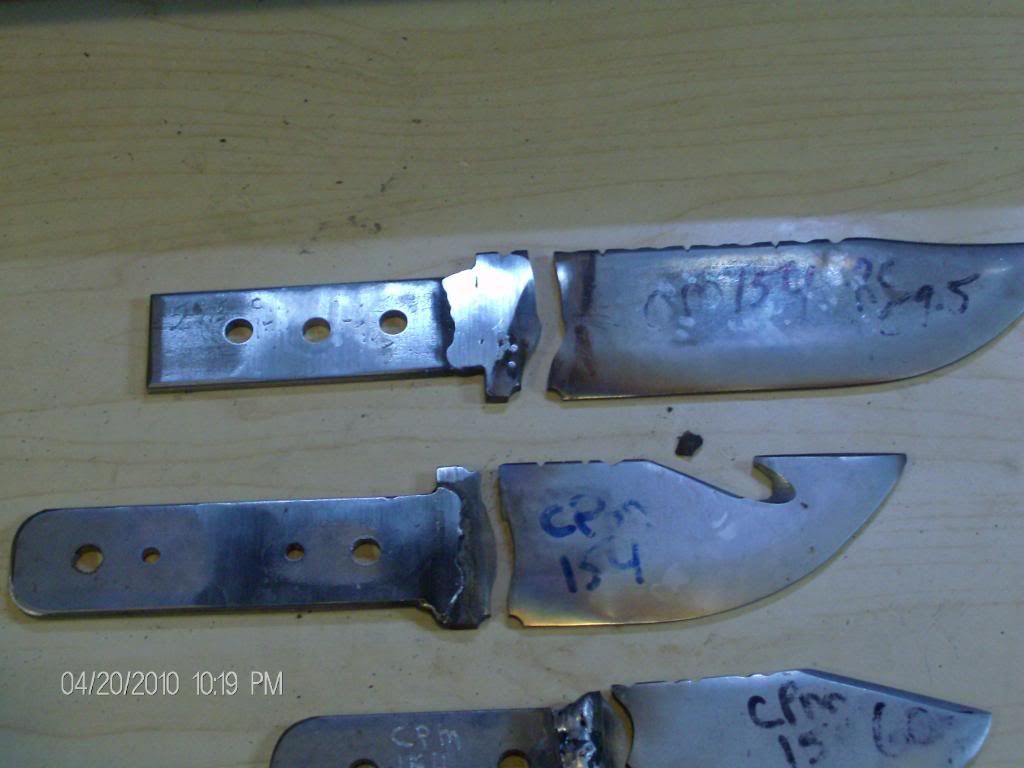HELLGAP
Dealer - Purveyor
I thought maybee this could be done to make handles like hidden tangs and save on metal . The bottom one is a damascus blade that worked perfect no flaws no damage. The CPM 154 I spent at least 10 hours working on these darn blades. I never noticed the cracks until I looked under the magnifying lamp I have. What a complete and total waste of time. All that grinding and heat treated and the price of steel in the toilet. I should have give the steel away for some one to make folder blades. This is a live and learn event . I hope you all learn from my misstake. The Damascus worked excellent you cant even see the weld . The blade now needs to be heat treated. I have no quenching oil can I use olive oil or canola oil to quench the steel is 1080 or 1085 with 15n20 nickle .







